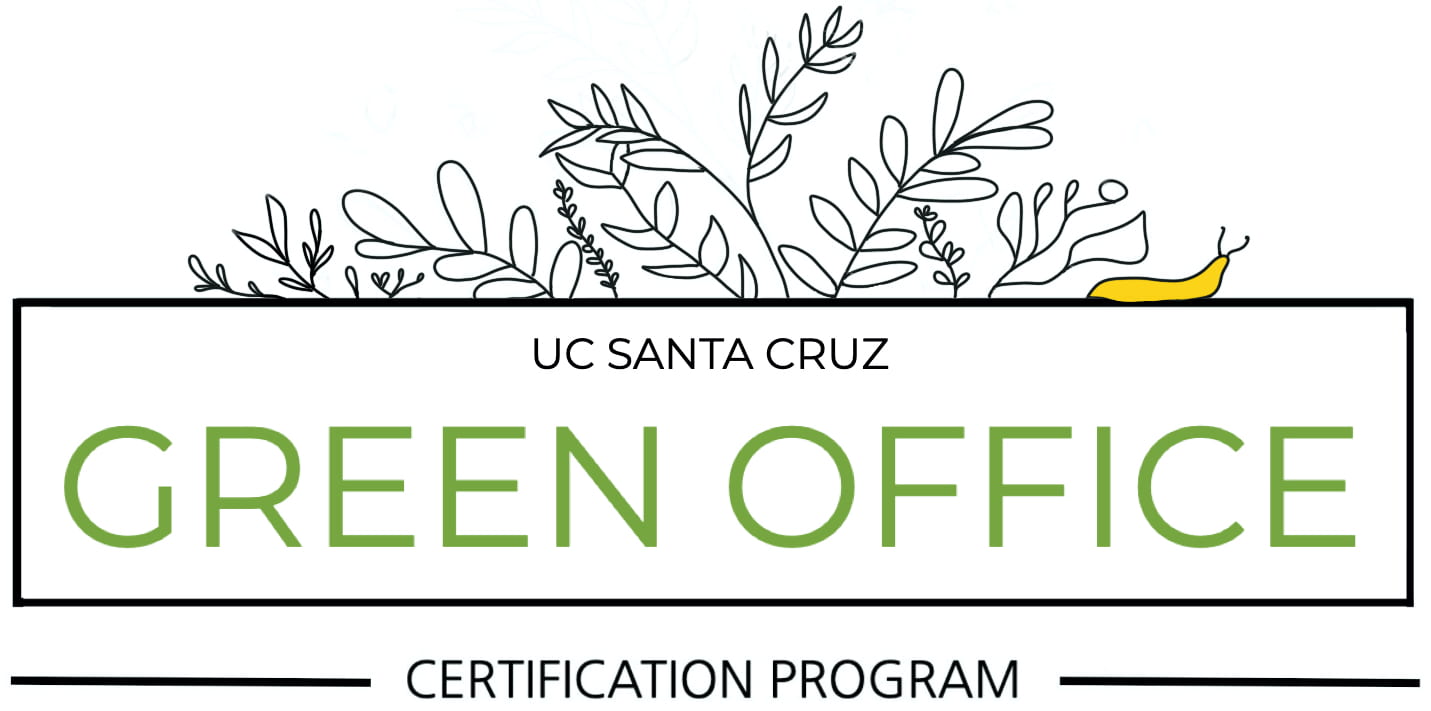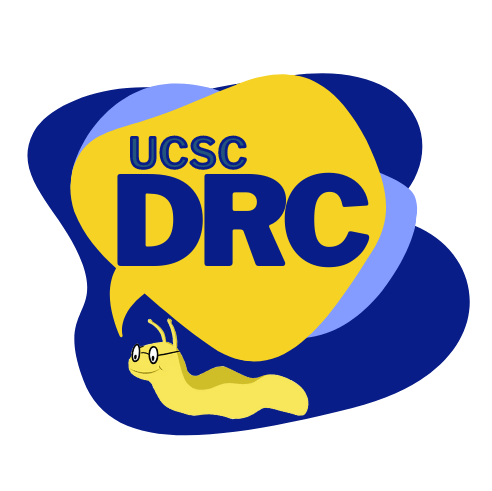
The Disability Resource Center (DRC) at the University of California, Santa Cruz (UCSC) is committed to ensuring that Undergraduate and Graduate students with disabilities have equal access to all aspects of university life. The DRC provides a variety of services and accommodations to help students with disabilities succeed academically, including note-taking assistance, exam accommodations, assistive technology, and more.
The DRC also works closely with faculty and staff to ensure that they have the resources and support they need to create inclusive learning environments. This includes providing training on disability-related issues, consulting on accessibility and accommodation strategies, and working with departments to ensure that all aspects of campus life are accessible to everyone.
The DRC is staffed by a team of professionals who are committed to promoting the full participation of students with disabilities in all aspects of campus life. They work collaboratively with students, faculty, and staff to provide individualized support that meets the unique needs of each student.

The DRC has also become certified as a Green Office! The DRC admin team collaborated with the Green Office team to conduct a full audit of office practices. This audit included reviewing everything from DRC’s purchasing practices, light use, printing and recycling/reuse practices. By implementing sustainable practices in their workspaces, DRC earned the certification level of Sprout!
Overall, the Disability Resource Center at UCSC is an essential resource for students with disabilities, ensuring that they have the support and accommodations they need to achieve their academic goals and fully participate in campus life.
Our History
The Disability Resource Center at UC Santa Cruz exists as the result of historic federal regulations of Section 504 of the Rehabilitation Act, signed in the 1970s. Prior to Section 504 there was little access to higher education for those with disabilities. John Hessler, former Director of the then named “Physically Disabled Students Program” at UC Berkeley and former Assistant Director of the California Department of Rehabilitation wrote:
“As late as the 1960s, if you went on to higher education and were disabled, the chances are your disability was not severe. Indeed, if you couldn’t handle your own physical needs, you were unwelcome on most campuses in this country.”
Changes began in the late 1960s. In 1969, Special Services in the Office of Education was created by an Act of Congress. Ten percent of the moneys available in this program were to be used to provide services to disabled students. By 1970, several programs had been funded and were providing services. They included Wright State University in Ohio, East Oklahoma State in Ada, Long Island University in Brooklyn, University of Arizona in Tucson, University of California at Riverside, Southwest Minnesota State and University of California at Berkeley.
Congress passed Section 504 of the Rehabilitation Act in 1973 after it was pocket vetoed twice by President Nixon. The law was to focus primarily on vocational rehabilitation programs. However, its wording made room for equal access to education. It read:
“No otherwise qualified handicapped individual in the United States . . . shall, solely by reason of his handicap, be excluded from participation in, be denied the benefits of, or be subjected to discrimination under any program or activity receiving federal financial assistance or under any program or activity conducted by any Executive agency or by the United Postal Service.”
There was only one catch. The Health, Education and Welfare department (HEW) had to promulgate regulations in order for 504 to be implemented. Unfortunately, many in positions of power were resistant to the new law and efforts were made to stall it. As a result, the disability community began to advocate for themselves.
In 1976, the American Coalition of Citizens with Disabilities (ACCD) announced their intention to demonstrate at various locations throughout the United States. In San Francisco, disabled activists engaged in a month long sit-in at the HEW offices—the longest sit-in of a federal building to date. In the end, their efforts paid off and Secretary of HEW, Joseph Califano, signed the important regulations for Section 504.
At the same time the fight for meaningful regulations was brewing, UC San Diego had commissioned Mark Hyman Rapaport in December 1975 to evaluate the UC campuses for physical accessibility. In his report, Rapaport commented:
“UCSC does not have a program for physically limited students. They discourage physically limited students from attending because of the geography of the campus. The campus is too segmented and primitive for most physically limited students, and thus they intentionally redirect students that are physically limited.”
It was shortly after this evaluation by Rapaport and the 1976 victory for disabled activists that the UC system began to seriously examine its campuses with the intention of compliance with Section 504. Just a few years prior, UC Los Angeles, UC Berkeley, UC Riverside and UC Davis had already begun to develop accessibility on their campuses of their own accord; now all the UCs were to initiate programs. In mid-1977, the Disability Resource Center was born at UC Santa Cruz under its original name “Office of Handicapped Student Services.” The Campus Plan for that year stated:
“The University of California is committed to a policy of not discriminating against any qualified handicapped persons, on the basis of their handicap. This policy states that such persons cannot be excluded from participation in, be denied the benefits of, or otherwise be subjected to discrimination under any university program or activity.”
The new disability office at UC Santa Cruz immediately began implementing academic accommodations, and by 1979, a disability van program was established to allow students with mobility impairments equal access to their classes, dorms and other campus buildings. Without the van it was impossible for some to navigate the hills of the campus. A dramatic shift in thinking had occurred in four years. No longer would students with mobility challenges be discouraged from attending UCSC and redirected to other schools. Rather, efforts were made to think inclusively and welcome students with physical disabilities.
In time, the Office of Handicapped Student Services shed its name and became “Disabled Student Services,” before changing its name again in the 1990s to its current title, “Disability Resource Center.” Over the years, service to disabled students has grown tremendously. Just 18 months after the office was first established, a campus census found only 53 who identified as having a disability. Currently, the DRC serves approximately 1000 students a year. During the fiscal year of 1978-1979, the operating budget was a mere $59,389. Staff consisted of one coordinator, an assistant and a typist clerk. Today the DRC has an annual budget of nearly $500,000 with 6 professional staff as well as several student office assistants and hundreds of student employees who provide services such as note taking, reading books on tape, and scribing for exams.
It’s astonishing what one law and the voice of the disability community accomplished to transform colleges and universities across the nation. The quality of life for thousands of our talented and intelligent fellow Americans was enhanced exponentially as a result of our society choosing to work against discrimination and barriers to equal access. The Disability Resource Center considers it a privilege to be a part of implementing Section 504, as well as the more recent Americans with Disabilities Act of 1990. It is our goal to continually find ways to improve universal access at UC Santa Cruz, and through that, fulfill the dreams of students who otherwise would never have had the chance to participate in a crucial rite of passage so many of us take for granted.
-Karen Keen
Sources
- Campus Plan Upon the University of California Response to Assembly Concurrent Resolution 201. January 1977. McHenry Library, Special Collections.
- Campus Plan Upon the University of California Response to Assembly Concurrent Resolution 201. January 1979. McHenry Library, Special Collections.
- Hessler, John. College Education for the Severely Disabled. McHenry Library, Special Collections.
- Overview of 504
- Rapaport, Mark Hyman. A Preliminary Report on the Facilities for Physically Limited Students at the University of California General Campuses. February 1976. McHenry Library, Special Collections.
- Section 504 History–Overview
Learn more About Us

Check out the UCSC Slugcast about Navigating the DRC to learn more about how students may benefit from DRC services.
Visit the Our Mission & Vision page that describes what the DRC’s goals are for students with disabilities.
The Rights and Roles page covers what rights and responsibilities students, faculty, UCSC staff, Families and Allies, and the DRC have. It also goes over everyone’s role is in the process of providing and receiving academic accommodations.
Visit Accommodate for information on how to request specific accommodations.
Visit the Meet the Teams page to learn about who is available to offer advising and support regarding the student’s disability related needs.
Check out the DRC Data to see how much the DRC has provided support for students with disabilities over the years.
Feel free to Contact the DRC for any questions!